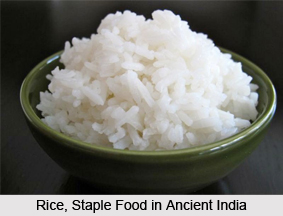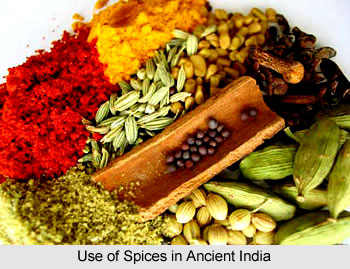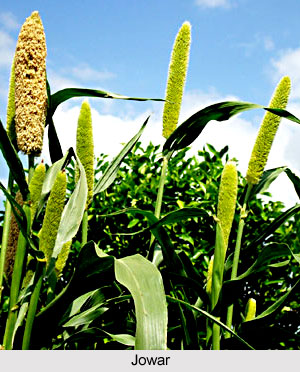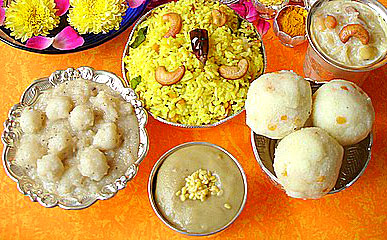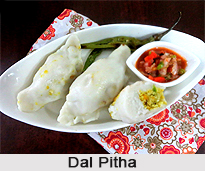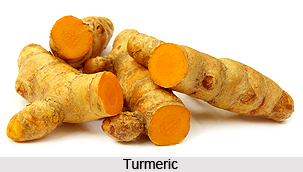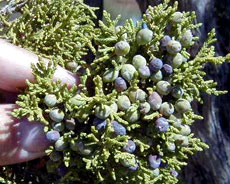 Botanical name:Juniperous communis Linn.
Botanical name:Juniperous communis Linn.
Family name: Pinaceae.
Indian names are as follows:
Hindi:Aaraar, Haubera, Abhal
Bengali:Havasha
Kashmiri:Betar, Petthra, Pama, Chui, Haulber
Kumauni:Chichia, Jhora
Punjabi:Betar, Petthri, Chui
Sanskrit:Vapusha
Urdu:Abhal, Saru.
It is an evergreen shrub, sometimes attaining the height of a small tree with erect trunk and spreading branches, covered with a shreddy bark. The leaves are straight and rigid, oval shaped, about 6 to 13 mm long, with sharp prickly point. The male and female flowers produced in April and May is usually borne on separate plants, the male flowers in short catkins and female flowers in short cones. The fleshy berry like fruit does not ripen until the second year. The roundish fruit is sub-globose, bluish black dark purple when ripe, 10 to 13 mm in diameter, covered with a waxy blook; the three scales comprising the fruit occasionally gaping and exposing seeds; bony seeds usually three, elongated ovoid, embedded in brownish pulp.
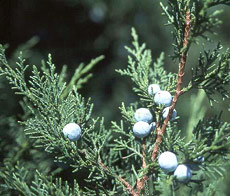 The plant is very variable with a number of geographical varieties and garden forms; it becomes prostrate, not more than 60 to 90 cm in height at higher altitudes in the Himalayas. The plant flowers in March/April and fruits ripen in August/September of the second year. Under natural conditions, the seeds are freely spread by birds, which devour the fruits. Juniper fruits have a gin like aroma and a sweet terebinthinate taste with a somewhat bitter after taste. The juniper berries of commerce are obtained by drying the ripe fruits. Oil of juniper is obtained by steam distillation of those berries.
The plant is very variable with a number of geographical varieties and garden forms; it becomes prostrate, not more than 60 to 90 cm in height at higher altitudes in the Himalayas. The plant flowers in March/April and fruits ripen in August/September of the second year. Under natural conditions, the seeds are freely spread by birds, which devour the fruits. Juniper fruits have a gin like aroma and a sweet terebinthinate taste with a somewhat bitter after taste. The juniper berries of commerce are obtained by drying the ripe fruits. Oil of juniper is obtained by steam distillation of those berries.
The fruits are a good source of Vitamin C (ascorbic acid); yield on an average is about 35 mg/100 grams. The fruit contain, besides the volatile oil and Vitamin C, fermentable sugars (33%), resin (8%), juniperin, probably a mixture of tannin and sugars (0.36%), fixed oil, protein, wax, gum, pectins, organic acids (formic, acetic, malic, oxalic and glycolic) and potassium salts.
Volatile oil from the fruit is known as Juniper oil in commerce. It is obtained by steam distillation of ripe fruits, the yield varying from 0.8 to 1.6%, according to the quality of fruit distilled. The oil from green unripe fruits is inferior; in over ripe fruits, the oil changes into resin. The bulk of the commercial oil is obtained as a by-product, during the distillation of alcoholic beverages. The oil, however, is partly deprived of the natural oxygenated odoriferous compounds.
Juniper oil is a colorless or pale greenish yellow limpid liquid with a characteristic odor of the fruit and a somewhat burning bitter flavor. On storage, the oil turns viscous and acquires a turpentinic odour.
The oil contains d-a-pinene as the major constituent together with smaller amounts of camphene, cardinene, juniper camphor (possibly a sesquiterpene alcohol), a hydrocarbon (junene) with strong diuretic properties, terpineol, certain unidentified oxygenated compounds possessing the characteristic juniper odor, and traces of esters.
Terminal twigs and needles yield (0.15 to 0.18%) bright yellow oil with characteristic odor of juniper oil; it contains d-a-pinene, camphene and cardinene.
Juniper Wood Oil is obtained by steam distillation of wood. It contains cardinene and a sesquiterpene. Commercial juniper wood oil is usually obtained by distilling turpentine with juniper woods and twigs; more often, it is a mixture of turpentine and juniper oil.
The bark oil obtained by the steam distillation of bark (yield 0.25 to 0.50%) contains juniperene a-pinene and silvestrene.
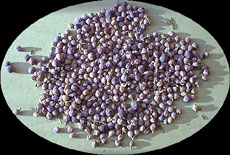 The fruits are employed for flavoring gin and food products; they are sometimes used as article of food. Large quantities of the fruit are used in Europe for the preparation of alcoholic beverages of the gin type. For the purpose, the fruits are crushed, immersed in warm water and fermented; the fermented mass is then distilled and rectified; 1000 kg of fruit yields 16 to 18 liters of beverage (containing 40 to 50% alcohol) and 5 to 6 kg of volatile oil.
The fruits are employed for flavoring gin and food products; they are sometimes used as article of food. Large quantities of the fruit are used in Europe for the preparation of alcoholic beverages of the gin type. For the purpose, the fruits are crushed, immersed in warm water and fermented; the fermented mass is then distilled and rectified; 1000 kg of fruit yields 16 to 18 liters of beverage (containing 40 to 50% alcohol) and 5 to 6 kg of volatile oil.
Juniper oil is largely used in compounded gin flavor, liquor and cordials. A twice-rectified oil has high flavor value.
Juniper needles are rich in ascorbic acid (88 mg/100 gram); they contain resin, wax and esters. The fruits and roots yield brown and purple dyes respectively. The bark is said to be used in Russia for tanning.
The wood of juniper is brownish, moderately hard, durable, fragrant, highly resinous and easy to season. It is ideal for woodcarving and fancy woodwork. The wood and young twigs are burnt as incense.
The fruits and the volatile oil possess carminative, stimulant and diuretic properties and are useful in different forms of dropsies, especially in conjunction with other drugs. They have been used in various Sexually Transmitted Diseases. The oil of juniper berries has been known for a long time as a diuretic. Because of its local irritating effect on inflamed organs, however, great care must be exercised in its dosage. The wood is diuretic, sudorific and blood purifier; it is employed in gout, rheumatism and cutaneous diseases.
The exhausted fruit, after the extraction of oil, on repeated extraction with warm water and concentration, yield (30 to 38%) a product known as `Succus Juniperi`. The preparation consisting chiefly of invert sugar was formerly used in Europe as a diuretic and sudorific. Exhausted fruits are used as feed for stock.
Considering various virtues as discussed above there is no doubt that the plant 9is a good source for production of a number of useful and commercially important products. With present global trend of preferring natural products like natural dyes, herbal medicines etc., the value of this plant and its products have been further enhanced. Therefore, the plant becomes an important and valuable source for our rural industrialization programme.

